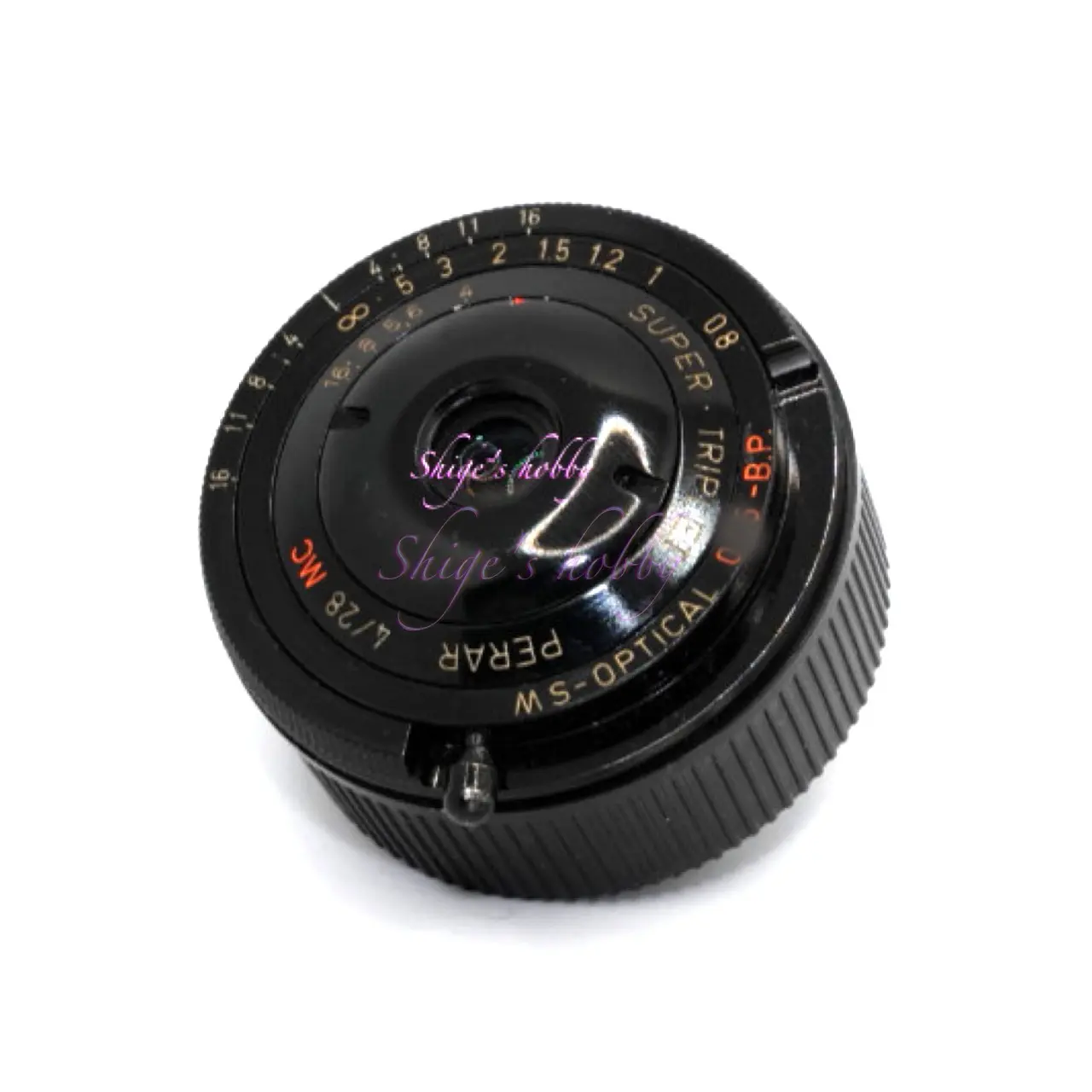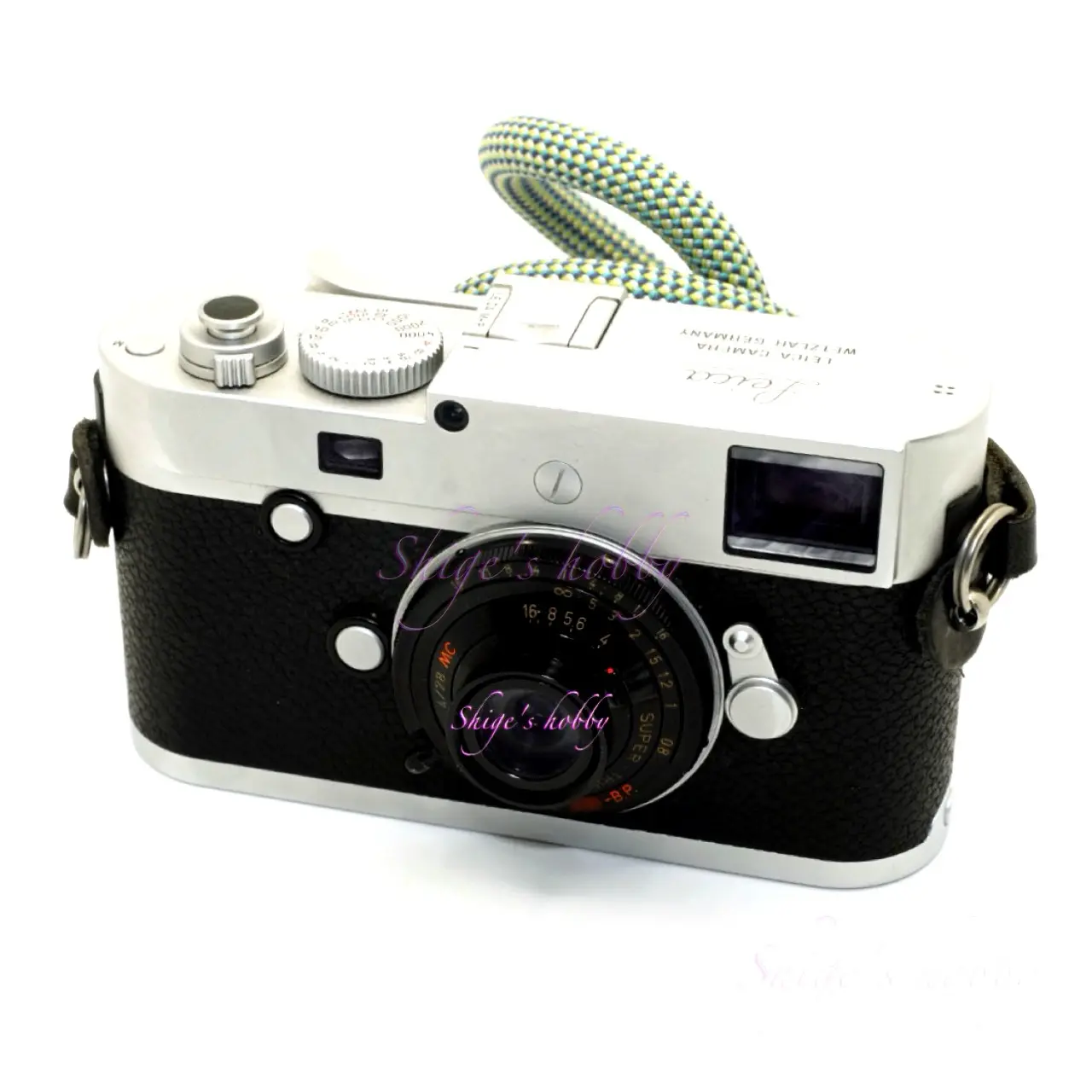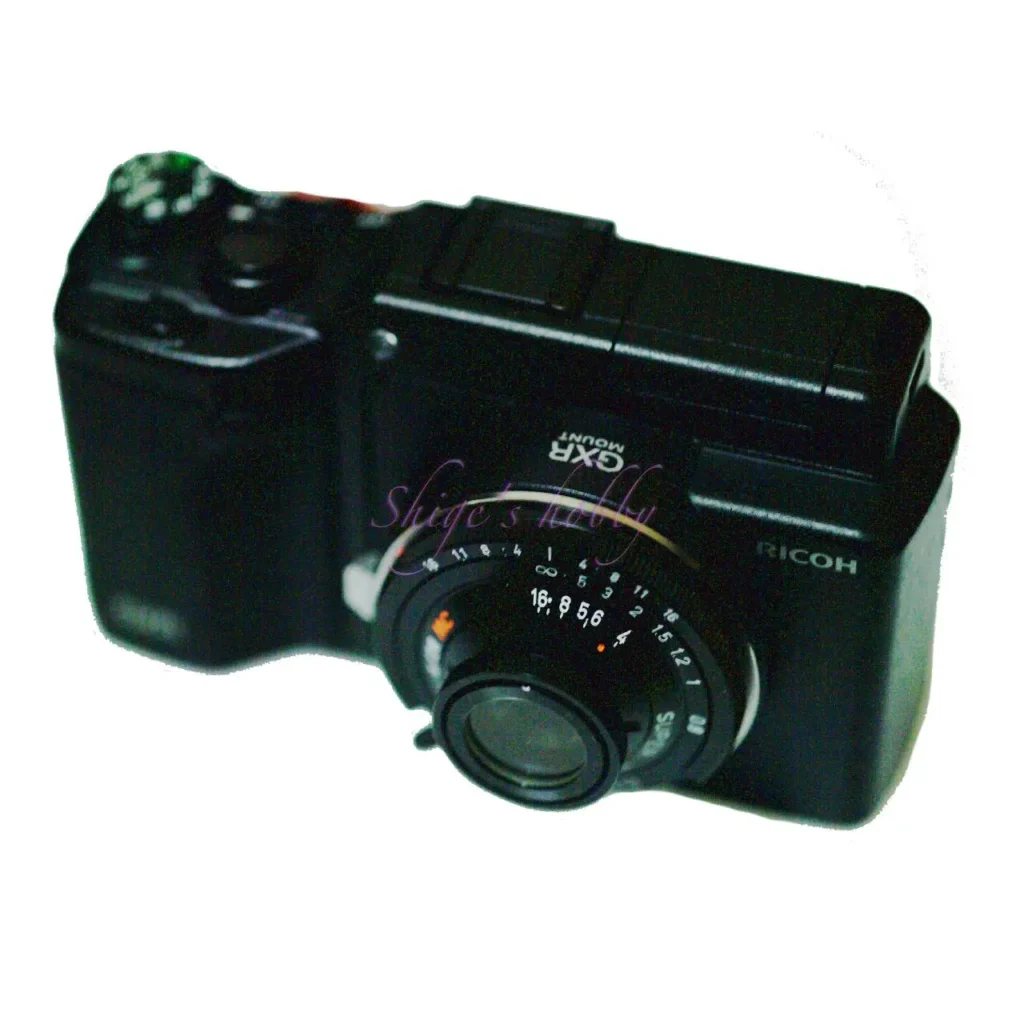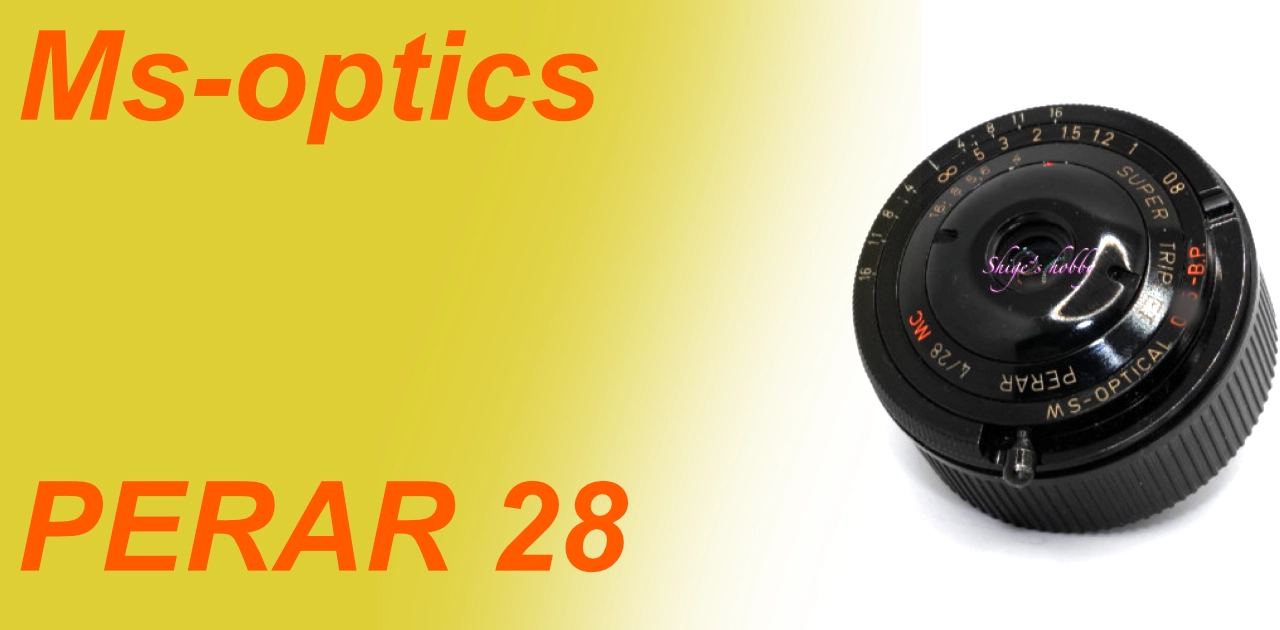A review and sample photos of the Ms-optics PERAR 28mm F4 used with various digital cameras, including the film camera LEICA M6 and LEICA M10.
- Please see the disclaimer regarding advertising here.
- Italicized links in the text are advertisement links that take you to other sites.
Table of contents
Gallery
The following cameras were used to take the photo examples with a lot of cats.
- LEICA M6 +KODAK 200 +NIKON COOLSCAN-V
- LEICA M10
- LEICA M9
- LEICA M8
- EPSON R-D1
- RICOH GXR A12
- Click on the layer to enlarge
Review


1.Overview
The MS-PERAR 28mm f/4, released in 2012, is the fourth wide-angle lens from Ms-optics (Miyazaki Optical) overall and the second in the Triplet series. As the lens nameplate reads SUPER TRIPLE, the lens features a triplet structure with three elements in three groups, earning it the PERAR name.
Detailed specifications are listed in the table, but the key specifications are summarized below.
- Lens construction: 3 elements in 3 groups
- Aperture: f/4-f/16
- Aperture blades: 10
- Lens thickness: 9mm
- Minimum focusing distance: 0.8m
- Range of rangefinder coupling for Leica M-type rangefinder cameras: 0.8m
- A 19mm diameter filter is screwed into the hood.
- A dedicated cylindrical hood is included.
2.Usability
The MS-PERAR 28mm f/4 is a compact lens characteristic of the Pera series, perfectly suited to compact cameras such as the MINOLTA CLE film camera, the Sony NEX series, and the LUMIX GM5 digital camera.
Despite its compact size, the lens is easy to use. Focusing is achieved smoothly by sliding the focus lever at the bottom of the lens barrel, and the aperture is located at the front of the lens barrel and can be adjusted by rotating the attached hood. As with all MS-Optics lenses, the aperture ring does not have click stops, so accurate aperture settings must be confirmed visually.
■Film Rangefinder Camera
Looking at the results of negative film shot with the M6, we can see that the image starts with a sharp center and gradually fades out toward the edges. With monochrome film, a grainy finish adds character, but with delicate monochrome film with low ISO speeds or positive film, the gap between the sharp center and the edges may be noticeable.
■Digital Rangefinder Camera
We used digital rangefinder cameras with three sensor sizes. First, the LEICA M10 and LEICA M9, 35mm full-frame sensor cameras shown in the example images, are 20-megapixel digital cameras. In terms of resolution, the image is similar to that of positive film, with occasional noticeable gaps between the center and edges. Close-up shots in particular can suffer from circular blurring at the edges, resulting in unattractive images.
The LEICA M-P typ240, which is equipped with a 24-megapixel 35mm full-frame sensor with the same resolution as the LEICA M10, produces images not much different from those of the LEICA M10.
Next, the LEICA M8, an APS-H sensor camera, has a smaller sensor size than 35mm film, resulting in a focal length equivalent to 37mm (1.33 times the focal length in 35mm film). The 35mm full-frame sensor eliminates the distracting edges, improving the quality of the recorded image. The 10-megapixel resolution is also just right for this lens. Regarding the viewfinder frame used to determine composition when shooting, the LEICA M8 can display a 37mm equivalent viewfinder frame when a 28mm lens is attached, so focal length changes due to sensor size are not affected. Because the displayed viewfinder frame is 37mm, the feeling of using a 28mm lens is diminished.
Of the three sensor sizes, the EPSON R-D1 is an APS-C size sensor camera with the smallest sensor size, with a low pixel count of 6 megapixels, but the image quality is impeccable. The sensor size conversion factor for 35mm film is 1.5 times, so the focal length when attached is 42mm.
Like the LEICA M8, when a 28mm lens is attached, the R-D1 displays a 42mm viewfinder frame when the photographer selects the 28mm viewfinder frame.
The 42mm focal length is almost the same as the SMC PENTAX L 43mm lens for rangefinder cameras. This 43mm focal length is similar to the 35mm diagonal of a 35mm film, and is said to provide an angle of view close to the human field of view. When using this lens with the R-D1, the shooting experience is similar to that of a 50mm standard lens.
■Mirrorless Camera
The RICOH GXR +Mount A12 is equipped with a 12-megapixel APS-C sensor, roughly twice the pixel count of the EPSON R-D1. Because the sensor size is the same, the equivalent focal length on 35mm film is 42mm.
The lens’s rendering fully utilizes the 12-megapixel resolution, and there are no noticeable issues with the images captured.
When attached to the GXR, the minimalist camera system is smaller and more maneuverable than the GR LENS A12 28mm F2.5, which has a built-in autofocus mechanism. This combination can be used as a snapshot camera with the aperture set to F8 and the focus fixed at around 3m, allowing you to take pictures without finding anything.

Although we do not have any sample images available, the LUMIX GM5 is a mirrorless camera equipped with a 16-megapixel Micro Four Thirds sensor, and the equivalent focal length on 35mm film is 56mm, which is slightly longer than that of a standard lens and therefore creates a very different image from the original lens.
One of the benefits of shooting with digital rangefinder cameras and mirrorless cameras equipped with image sensors smaller than 35mm film is that you can cut out (crop) the peripheral areas and use only the central part of the lens, making it possible to extract only the best parts of the image.
This is because the triplet format used by the MS-PERAR 28mm has only three lens elements, which means there are fewer lenses available for image correction, so it is not possible to provide high-performance correction across the entire image, and the central area is good, but the image quality deteriorates towards the periphery, which is how the PERAR 28mm is designed.
Although we don’t have any sample images, the HASSELBLAD X2D-100C is a mirrorless camera equipped with a 100-megapixel, 44mm x 33mm medium-format digital sensor, and its equivalent focal length on 35mm film is a wide-angle lens of 22.4mm. Of course, the ImageSark doesn’t cover medium-format digital sensors, so vignetting and image distortion occur, and stopping down the aperture doesn’t improve this.
However, for night scenes, where vignetting and image distortion are less noticeable, or for scenes with a central subject, it’s possible to create images using the entire sensor.
The HASSELBLAD X2D-100C does not have a mechanical shutter, so rolling distortion can occur during shooting. The Fujifilm GFX series of mirrorless cameras, which also use the same medium-format digital sensor, does have a mechanical shutter, making it an option when using M-mount lenses with larger sensors.
3.Summary
In conclusion, to sum up the MS-PERAR 28mm f/4 is a wide-angle lens with the clarity of a three-element lens.
Compared to the 21mm and 24mm lenses in the same PERAR series, the MS-PERAR 28mm has the advantage of producing less image distortion, which is due to its longest focal length of the three lenses.
Since 35mm full-frame sensor cameras can sometimes show roughness in peripheral depiction, it is best to use it in situations where this is not evident, or with a camera with a smaller sensor size. However, it is also possible to create images with cameras with larger sensor sizes under certain conditions, so this lens can be used with a variety of cameras.
Specifications, considerations, etc.
There are many 28mm prime lenses available for rangefinder cameras, and it is a focal length with a wide variety of unique lenses.
I have used countless 28mm lenses, including the RICOH GR 28mm, MINOLTA G-Rokkor 28mm, LEICA SUMMICRON 28mm, Orion15, HEKTOR 28mm, HEXANON 28mm, Summaron 28mm, and ELMARIT-M28mm, and if I include lenses for single-lens reflex cameras, I have used even more 28mm prime lenses.
The PERAR series from Ms-optics consists of three elements in three groups and consists of four lenses, including this lens; the PERAR-35mm F3.5, PERAR-24mm F4, and PERAR21mm F4.5; all of which are wide-angle lenses with slightly slower maximum apertures.
| Manufacture | Ms-optics | Ms-optics | Ms-optics |
| Name | PERAR | APOQUALIA(I) | APOQUALIA(II/III) |
| Max aperture | 4 | 2.08 | 2.08 |
| Min aperture | 16 | 16 | 16 |
| Leaf blade | 10 | 10 | 10 |
| Lens Construction | 3 groups 3 elements | 4 groups 6 elements | 4 groups 6 elements |
| Min distance(m) | 0.8 | 0.8 | 0.35 |
| Lens length(mm)(*2) | 10 | 9.8 | 9.8 |
| Filter(mm) | 19 | 28 | 28 |
| Weight(g)(*3) | 45 | 70 | 70 |
| Release date | 2012.4 | 2016.9 | 2018 |
*3: Weight of lens only
Reference links
- Description of triplet lenses by Wikipedia
- EPSON R-D1x・Shige’s hobby
- EPSON R-D1・Shige’s hobby
- LEICA M10・Shige’s hobby
- LEICA M9・Shige’s hobby
- LEICA M8・Shige’s hobby
- HEXAR RF・Shige’s hobby
- HEXAR RF LIMITED・Shige’s hobby
- Ms-Optics PERAR 21mm F4.5・Shige’s hobby
- Ms-Optics PERAR 24mm F4・Shige’s hobby
- Ms-Optics PERAR 28mm F4・Shige’s hobby
- Ms-Optics PERAR 35mm F3.5・Shige’s hobby
Donation
Affiliate links
- Leica Lens・Ads by Amazon
- Ms-optics・Ads by Amazon
- Leica Books・Ads by Amazon

Update history
- 2025.10.21
- 2025.6.9
- 2024.11.20
- 2024.03.12:Update article
- 2022.06.04:First draft



Be First to Comment